USIM’s Guide to Facebook and Instagram Marketing Strategy & Best Practices
Social media has become an essential tool for marketing over the past two decades with a large emphasis placed on Facebook and Instagram. The inclusion of both platforms as part of a brand’s marketing plan has become mandatory for most modern campaigns. The platforms boast just under 3 billion users globally with over 297 million active users alone in the United States. Due to this large audience size, both platforms are strategic on building awareness, brand identity, and ultimately conversion.
While in the process of planning your campaigns on both Facebook and Instagram, it is crucial to ensure you are targeting the right audience and using the correct asset types offered. This document will provide a detailed overview of all creative types of assets available and provide best practices on how to utilize these creative units to have the most effective social media strategy.
Facebook Asset Types
Facebook has expanded on the types of creative units it offers since it launched in 2004. Before reviewing the specific creative units available, it is important to keep in mind the following best practices:
- Number of assets created and running should be based on campaign parameters (flight length, budget, goals, etc.)
- Facebook generally recommends waiting to evaluate asset performance until after the ad exits the learning phase
- The learning phase allows Facebook’s delivery system to explore the best way to deliver your ad (audience, time of day, type, etc.)
- There are no absolute rules when it comes to spend/volume behind each asset. USIM typically recommends allocating at least $5-10k per asset for the platform to gain enough learning to determine performance strength
- When building out assets, consider Facebook and Instagram’s specs which vary by ad type
- Always ensure images and videos are of high quality/resolution to ensure maximum performance and engagement
- When using video assets with no sound, it is still impactful. Many users browse Facebook with sound off
- Make sure you follow your brand guidelines (colors, fonts, logos) and remain consistent with your own branding
FACEBOOK CREATIVE UNITS & RECOMMENDATIONS
IMAGE
Best Used For: Increasing interest and awareness, delivering a simple message
This is the most basic ad format and is best used when advertisers have a single image and short header for copy. Image ads allow advertisers to show off products or services using a single photo with an optional footer and typically are used to raise awareness while delivering a simple message. Advertisers should utilize quality images paying careful attention to Facebook’s spec requirements. Messages should have minimal text/copy.
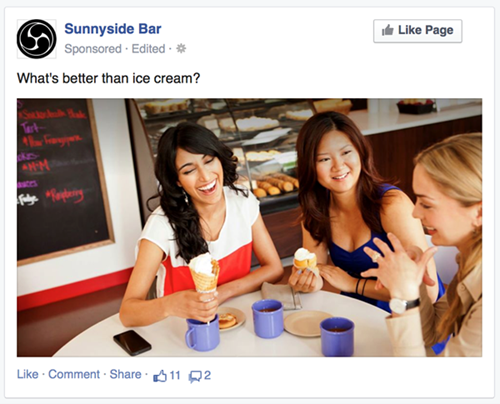
Image ads can be used to drive various outcomes, whether it’s from post engagements, likes, event responses, and even sign-ups. Some other helpful tips and considerations when creating images include:
- Avoid using too much text surrounding the image
- Focus on the message you are trying to convey
- Use Facebook’s Ads Manager Preview to experience your ad the same way your audience will. This is helpful to spot any necessary changes to make before publishing
VIDEO
Best Used For: Interest/awareness, driving engagement with the brand
Like photo ads, video ads can showcase a whole video from your brand. These ads are typically used to showcase products or services to raise awareness. Videos ads are a minimum of 01 seconds with a maximum of 4 minutes. Even without actual video assets, video ads can be created using GIF-like graphics or other animations.
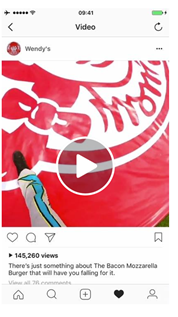
As a best practice, it is recommended advertisers keep their videos short and around:15 seconds. Video ads historically have some of the highest conversion on Facebook due to their interactive nature and ability to be more engaging. When creating videos for Facebook ads, advertisers should consider the following:
- Ensure ad will convey the intended message with and without sound as many users browse Facebook without sound on
- Videos should be quick and attention-grabbing
- Create videos that are mobile-optimized. The majority of Facebook traffic is now on mobile devices as opposed to desktop
STORIES
Best Used For: Showing off-brand attributes, highly creative and immersive messaging, driving additional awareness and consideration
Stories units live outside the Facebook feed and give users a full-screen experience. These units pop up in between the organic Stories that users are consuming on the Facebook platform. Stories ads offer more freedom and expression than standard photo or image ads as creators can experiment with different video effects.
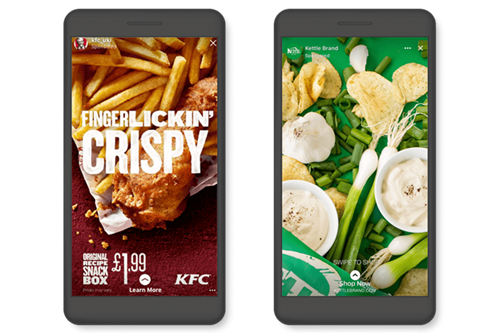
When building out Stories ads, it’s important to remember the following:
- Keep the pace of Stories quick, switching between different images and videos
- Tools such as augmented reality and motion can help enhance viewing experience
- Enhance with sound where possible
- Strong CTA will drive users to take action, such as “TAP HERE”
MESSENGER
Best Used For: Establishing direct relationship with consumers
These ads are sent to customers through Facebook Messenger. Messenger ads will appear in the main tab of the Facebook Messenger app. Users will see the Messenger ad amongst their current conversations. Messenger ads can then contain images and text, similar to how users message each other across the platform.
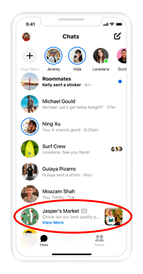
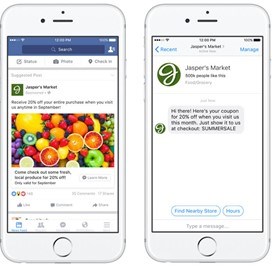
CAROUSEL
Best Used For: Showcasing multiple products/offerings, driving conversions/site visits
These units feature a series of images or videos that a user can swipe through. They are featured both in-feed and in Stories. Carousel units are typically best for introducing audiences to a broad range of products, and each image in the carousel can have a unique landing page tailored to the product. This unit is also very effective for storytelling or explaining a process.
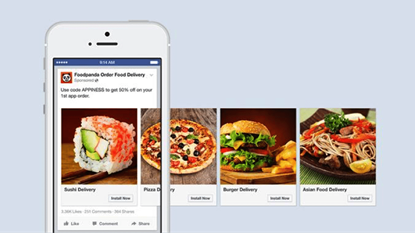
When creating a Carousel ad, keep in mind the following:
- Create multiple unique headlines, CTAs, and descriptions for each image of the Carousel
- Highlight top-performing images or videos to best engage the audience
- Linking to multiple landing pages allows for a more relevant and personalized experience
SLIDESHOW
Best Used For: Showcasing multiple products/offerings, driving conversions/site visits
These units are essentially the middle point between Photo and Video ads. Slideshow ads allow advertisers the ability to combine an ad with sound and a Slideshow of images, but require less data usage than Video ads. Slideshow ads use motion, sound, and text to tell a story. A total of 3-10 images or a single video can be used in a Slideshow ad. Typically, these units are created by advertisers/creators who may not have video-making experience, but still want to capture the user’s attention beyond a standard image or video post.
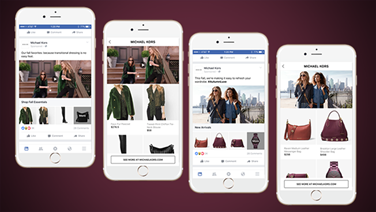
COLLECTION
Best Used For: Showcasing various products, driving sales/conversions of goods
Building off Carousel ads, Collection Ads showcase products directly from an advertiser’s product catalog. These types of units are typically best suited for e-commerce brands since users can purchase directly from these ads (via CTA’s like “Shop Now” or “Learn More”). These units differ from Carousel ads because they are more customizable and full-screen. This allows for an instant experience and makes it easier for users to discover, browse, and purchase products. Collection ads include a cover image or video with multiple products. When someone taps it, the full-screen experience begins.
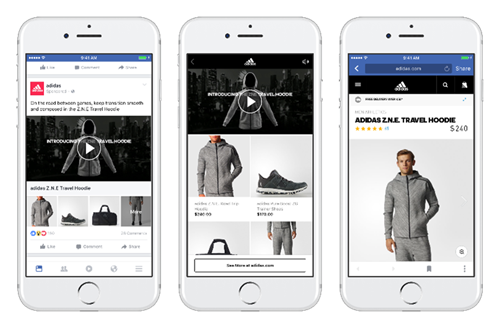
When building out Collection ads consider the following:
- Leverage Facebook algorithms to decide which products from your calendar should be highlighted for each user
- Include a variety of products in your catalog that users can choose from
- Include an eye-catching image for each product to drive engagement
INSTANT EXPERIENCE ADS
Best Used For: High-level engagement, further consideration
Formerly known as Canvas ads, these are mobile-only units that let users engage with the advertiser's content. Users can swipe through a carousel of images, tilt the screen in different directions, zoom in/out as well as other functionalities.
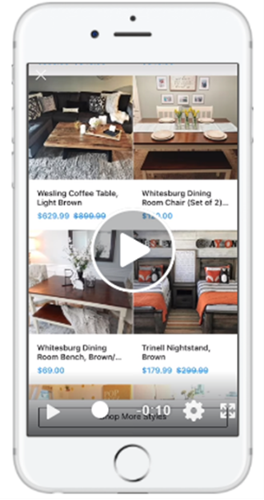
These types of units are typically for advanced advertisers as they can be labor-intensive to create. Facebook typically recommends advertisers use between 5-7 components while repeating a central theme through the ad.
POLL
Best Used For: Additional engagement and customer insights
The Poll ad is a mobile-only format that includes an interactive component by allowing a two-option poll to an image or video ad. A separate link is able to be added for each poll choice.
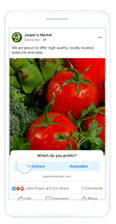
Both the advertiser and the user who responds are able to see the results of the poll. These types of units are great for engaging your audience in fun polls related to your product or service as well as potentially soliciting customer feedback.
IN SUMMARY
The chart below provides a high level recommendation for which types of Facebook units are best depending on your campaign strategy. As always, please consult with your USIM team to determine which types of creative units serve your individual campaign best.
|
Strategy |
Recommended Creative Units |
|
Awareness |
Image, Video, Stories |
|
Engagement |
Carousel, Messenger, Poll Collection, Instant Experience |
|
Consideration |
Video, Carousel, Stories |
|
Site Visits |
Carousel, Stories, Collection |
|
Purchase/Conversions |
Shopping, Collection |
INSTAGRAM AD TYPES
Similar to Facebook, Instagram has many different types of ad units and sizes. Campaigns activated in the Facebook Business Manager can also be activated in Instagram should that platform be relevant for the campaign launching. When creating assets for Instagram, it’s important to keep the following in mind:
- Ensure your assets are visually enticing. Instagram is a visual platform (more so than Facebook) and creative units should emphasize visual more than text
- When using video, the asset is still impactful even with the sound off as many users browse Instagram with the sound off
- Stay within brand guidelines (colors, fonts, logos) to keep a consistent theme
- Instagram users in particular love video. Consider using video wherever possible to drive performance
- When promoting products, test out which images work best
- There are no absolute rules when it comes to spend/volume behind each asset. USIM typically recommends allocating at least $5-10k per asset in order for the platform to gain enough learning to determine if the asset is performing strongly
IMAGE
Best Used For: Increasing interest and awareness, delivering a simple message/focusing on a single product
Image ads allow brands to use one photo to advertise their products or service. While it’s possible to add text to Image ads, Instagram typically recommends limiting text.
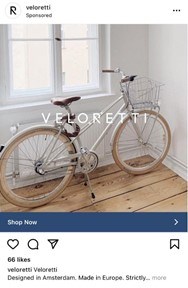
Use image ads when your campaign has compelling visual content that can be conveyed in one image. The image should be either high-quality photography or a high-resolution graphic and display well across multiple platforms.
VIDEO
Best Used For: Interest/awareness, driving engagement with the brand
Very similar to image ads, video ads allow for advertisers to include up to 60-second videos to showcase their products or offerings.
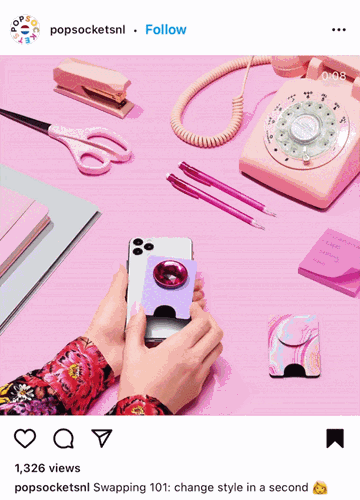
Video ads include filters, locations, captions, and product tags. Most users engage with Instagram on mobile devices, make sure your video is optimized accordingly.
Some helpful tips include:
- Shoot your video vertically
- Start with a hook in your video to discourage users from scrolling through regardless if video is in-feed or part of Stories
- Provide value to the user, whether in the form of entertainment or information
- While it can be important to use sound, many users may be browsing Instagram with sound disabled. Make sure your video communicates its intended message without sound
STORY ADS
Best Used For: Showing off-brand attributes, highly creative and immersive messaging, driving additional awareness and consideration
Story ads are full-screen videos or images that appear between a users’ stories. Engagement tends to be higher with Story ads as the format can cover the whole screen.
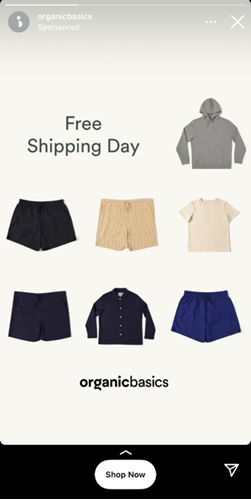
Instagram Stories is the most utilized feature within the app. Engagement is often higher since it can use multiple images and videos. The call-to-action is featured as a tap here button/link and is usually labeled as “Tap Here”, “Shop Now”, or “Read More”. Story units can also be used to add a “Poll sticker” which invites users to take part in a two-option poll. As a best practice, ensure Story ads have the look and feel of an organic Instagram story so they don’t stand out in a user’s feed as an ad.
CAROUSEL ADS
Best Used For: Showcasing multiple products/offerings, driving conversions/site visits
Carousel ads can feature a series of videos or images that a user is able to swipe through. These appear both in-feed and within Instagram Stories. Typically, these ads showcase a collection of products or tell a multi-part story with a maximum of 10 images/videos.
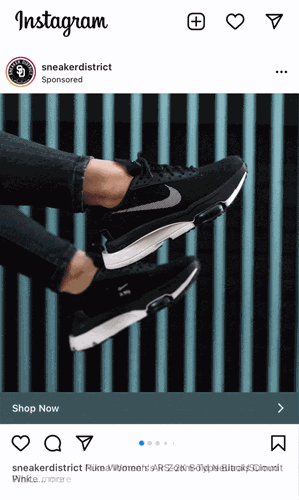
When creating a Carousel ad, keep in mind the following:
- Prioritize copy as much as images to provide proper context
- Don’t feel the need to use 10 images/videos if you can tell your intended story with fewer assets
- For products/services, intrigue users with any special offers or deals
- Choose CTA carefully based on your campaign’s goals and objectives
EXPLORE ADS
Best Used For: Showcasing new products/offerings users may not be aware of
Explore Ads are standard Instagram ad formats (Photo, Video, Collection, Carousel, etc.) that appear on Instagram’s Explore page. The Explore page is a collection of public photos, videos, reels, and stories that are tailored to each Instagram user. Users can navigate to the explore page by tapping the magnifying glass in the app.
IGTV ADS
Best Used For: Driving awareness/engagement when users are consuming IGTV content
IGTV is a stand-alone video app allowing creators to share longer videos than those found in the standard Instagram feed. The basic functionality of IGTV is also available within the Instagram app. IGTV ads are still in the process of being rolled out but will appear when a user clicks to watch an IGTV video from the preview button in their feed. These ads will be mobile-optimized, vertical videos, and up to 15 seconds long.
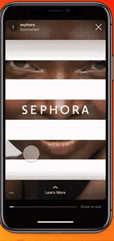
These ads will most likely be used for upper funnel metrics such as engagement and brand awareness. Given that the video is limited to 15 seconds, it is important to be as creative as possible while getting to the hook quickly.
SHOPPING ADS
Best Used For: Driving conversions within the app, showcasing multiple products
Shopping ads allow users to view and purchase products within the Instagram app (businesses will need to have Instagram Checkout enabled). This ad type will take users directly to a product description page within the app enabling purchase.
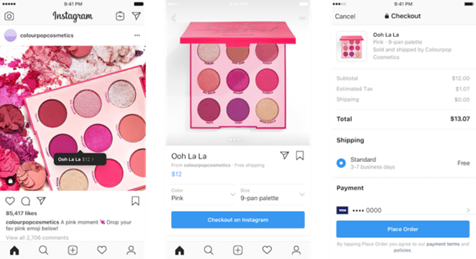
Your Instagram Shopping catalog should be set up to enable users to select and purchase products easily. A brand’s Instagram Shop is essentially a customizable digital store allowing customers to browse different products within the Instagram app. As a best practice, products featured should be in stock and include a helpful description of the item for potential purchasers.
COLLECTION ADS
Best Used For: Showcasing multiple products/offerings
These units are a combination of Shopping ads and Carousel ads meant specifically to showcase products directly from your product catalog. These types of units are typically suited for e-commerce brands to browse various items within the unit and checkout within the app.
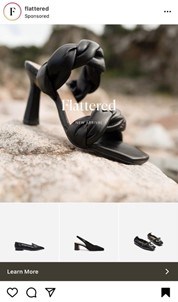
REELS ADS
Best Used For: High-impact and immersive messaging
Created recently in response to TikTok, Instagram Reels are videos that are up to :60 seconds long. Unlike Stories, they do not disappear after 24 hours. Reels are accessed via the Reels icon at the bottom of the Instagram app page. Reel ads are similar to Stories ads except served when users are watching Instagram Reels
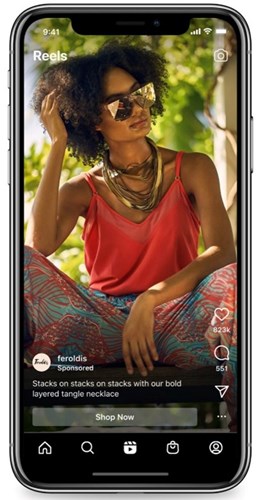
Ad units can be shown between Reels (similar to Stories) and can be up to:30 seconds long. As a best practice, they should typically include sound or music to be integrated with the organic Reels.
SUMMARY
The chart below provides a high-level recommendation for which types of Instagram units are best depending on your campaign strategy. As always, please consult with your USIM team to determine which types of creative units serve your individual campaign best.
|
Strategy |
Recommended Creative Units |
|
Awareness |
Image, Video, Stories, IGTV, Reels |
|
Engagement |
Carousel, Collection, Explore, Reels |
|
Consideration |
Video, Carousel, Stories |
|
Site Visits |
Carousel, Stories, Collection |
|
Purchase/Conversions |
Shopping, Collection |
Conclusion
There are a wide variety of ads that brands have access to across Facebook and Instagram. This can be overwhelming when determining your social media campaign and strategy. To ensure you are developing both the right types of assets and placing the right messaging in the marketplace, consult with your USIM team who will provide direction specific to your campaign goals and objectives. All campaigns are unique, and the assets required will be dependent on where you are trying to reach users in the funnel. Always ensure you follow Facebook/Instagram best practices and allow an asset time to generate enough impression volume to properly determine performance before making any decisions to swap or remove. Finally, be sure to properly define measurements and KPI’s to determine the success of your campaign.
If you need assistance determining how best to approach any part of the social media process, please contact USIM and our experts can provide a customized strategy.
